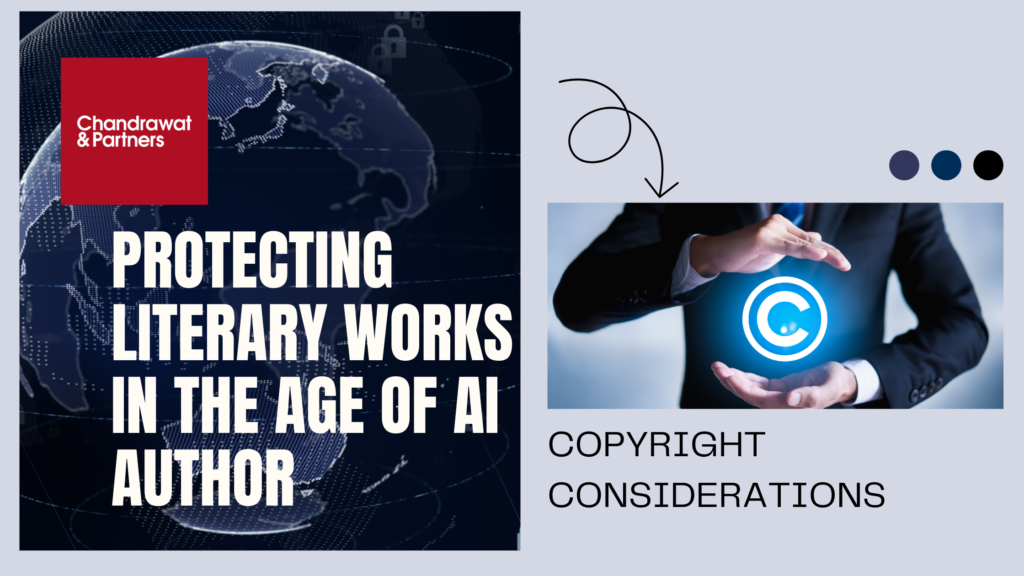Edit Content
Edit Content
Edit Content

In an era where artificial intelligence (“AI”) is increasingly becoming a creative force, the realm of literature finds itself at a fascinating crossroads. From algorithmically generated novels to AI-authored poetry, the boundaries of authorship and creativity are being redefined. As we witness the emergence of AI as a tool for literary creation, questions surrounding copyright, ownership, and the protection of intellectual property rights have taken centre stage.
The advent of AI-generated literary works brings forth a myriad of legal, ethical, and practical considerations. Who holds the rights to a novel penned by an algorithm? How do we define the concept of originality in the context of AI-authored texts? What implications does this technological shift have for traditional authors, publishers, and the broader literary community?
For a very long time, robotic artists have been engaged in a variety of artistic endeavours. Computers have been creating crass art since the 1970s, and this trend is still going strong today. The majority of these computer-generated artworks were primarily dependent on the programmer’s artistic contribution; the machine was merely an instrument or a tool, much like a brush or canvas. However, the technological transformation we are currently experiencing may force us to reconsider how computers and the creative process interact. The fast advancement of machine learning software, a kind of artificial intelligence that creates self-governing systems with the ability to learn without explicit human programming, is the foundation of this revolution.
An algorithm that is included in a computer program created for machine learning enables the programme to learn from data input, evolve, and make future decisions that may be directed or independent. Programmers offer the input that machine learning algorithms use to learn when they are applied to literary, musical, and artistic creations. They use the knowledge they get from these facts to create new art, coming to their own conclusions about the form of the new work as they go. While programmers can define parameters, the work is generated by the computer program itself, also known as a neural network, in a manner similar to human cognitive processes. This is an important aspect of this sort of artificial intelligence.
Artificial intelligence-generated content may have significant effects on copyright regulations. Historically, copyright ownership of computer-generated works was assumed to be unassailable as the program was essentially a pen-and-paper substitute supporting the creative process. If a creative work is original most definitions of originality call for a human author it is protected by copyright. The majority of jurisdictions including Germany and Spain state that copyright protection is only available for works that are created by humans.
However, with the most recent developments in artificial intelligence, a computer program is no longer just a tool rather, it now actively participates in the creative process by making numerous judgements without the need for human input.
Games, journalism, and music are among the industries already using artificial intelligence to create original content. Since these works are not written by human authors, they may theoretically be considered free of copyright. They were therefore open for everyone to use and reuse. That would be terrible news for the businesses that are selling the pieces. Imagine spending millions developing a system that creates music for video games, only to discover that anyone in the world can use it for free and that it is not legally protected.
Even while it’s hard to predict exactly how this might affect the creative sector, investment in automated systems might be discouraged. Why would developers invest in such systems if they are unsure if works produced via machine learning are protected by copyright? However, considering the savings in labour expenses, using artificial intelligence to manage labour-intensive tasks might still be worthwhile; however, it is currently too early to know.
By implementing a sui generis system, AI-generated creations may also be protected beyond the purview of copyright laws. This kind of approach can offer less protection in terms of the length of the copyright and other aspects. According to one source, the length of these pieces could be as little as 5 to 10 years. The new model of AI copyright protection would result in far less interference with the current norms of copyright law since it would offer protection for a shorter period under the copyright system. There would be less potential for AI authors to crowd out human authors in creative markets, as the former would soon lose their copyrights.
In addition to the authorship problem, WIPO has discovered a new problem of copyright with “deep fakes.” “The generation of simulated likenesses of persons and their attributes, such as voice and appearance” is what is commonly referred to as “deep fakes.” Deepfake technology is using artificial intelligence in an ever-growing way. When someone is shown in a deep fake without their consent and their actions and opinions are not real, there may be additional problems than just copyright, like privacy invasion and defamation. The public may grow to love deepfakes of well-known athletes, singers, leaders, and other celebrities, and there may be a sizable market for them. These deep fake works may also continue after the death of such persons and bring good revenue to their creators.
Copyright law can handle works in which there is little to no human input in two ways. It has two options: it can either assign authorship to the program developer for works created by computers or it can refuse copyright protection for those works.
Copyright conferring on artificial intelligence-generated works has never been expressly forbidden. Nonetheless, there are hints that non-human copyright may not be allowed under the rules of many nations. According to the Copyright Office in the United States, for instance, “an original work of authorship may be registered, provided that the work was created by a human being.”
There are a few nations that exhibit the second option granting authorship to the programmer including Hong Kong (SAR), India, Ireland, New Zealand, and the UK. The Copyright, Designs and Patents Act (CDPA), section 9(3), best captures this strategy. It reads as follows:
“In the case of a literary, dramatic, musical or artistic work which is computer-generated, the author shall be taken to be the person by whom the arrangements necessary for the creation of the work are undertaken.”
The boundary between artwork created by a computer and artwork created by a human is anticipated to become increasingly hazy as artificial intelligence is used by artists more and more as machines grow more proficient at producing creative works.
Soon, we might not be able to tell the difference between material created by machines and that created by humans if processing power is sufficient. We’re not there yet, but when we do, we’ll have to make a decision about what kind of protection if any we should offer to emergent works produced by clever algorithms with little to no help from humans.
While originality requirements in copyright laws have been shifting away from rewarding skill, labour, and effort, maybe we can make an exception for the results of advanced artificial intelligence. The alternative appears to run counter to the reasons that creative works should be protected in the first place.
For more information or queries, please email us at
[email protected]

Managing Partner
Copyright © Chandrawat & Partners. All Rights Reserved.
Copyright © Chandrawat & Partners. All Rights Reserved.

Chandrawat & Partners stands as a dynamic and rapidly expanding full-service firm, specializing in the delivery of exceptional professional and corporate services to a diverse clientele, both foreign and local. We proudly represent companies and individuals across a wide spectrum of sectors through distinct entities established in various countries worldwide.
ASIA
AFRICA
EUROPE
NORTH AMERICA
SOUTH AMERICA
OCEANIA
Chandrawat & Partners uses cookies to run our site and improve its usability.
By using our site you agree to our use of Cookies.